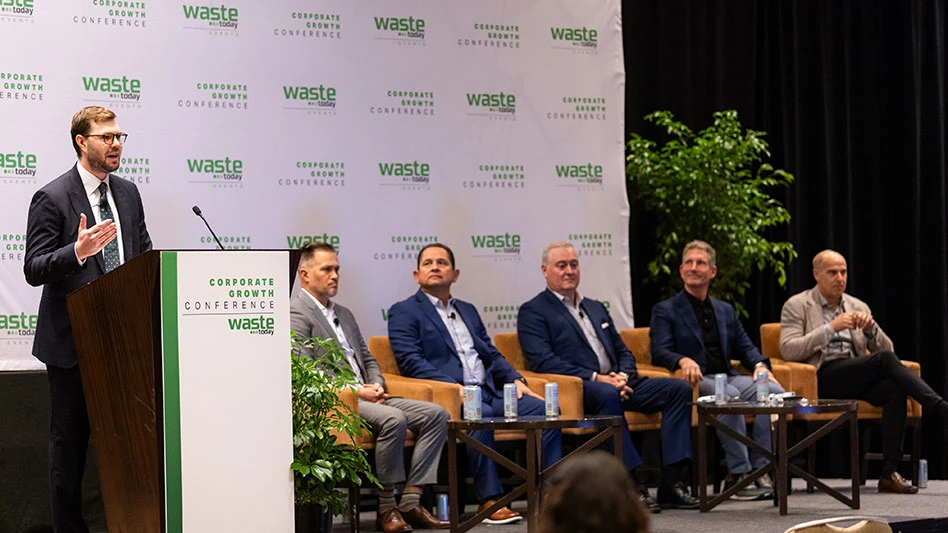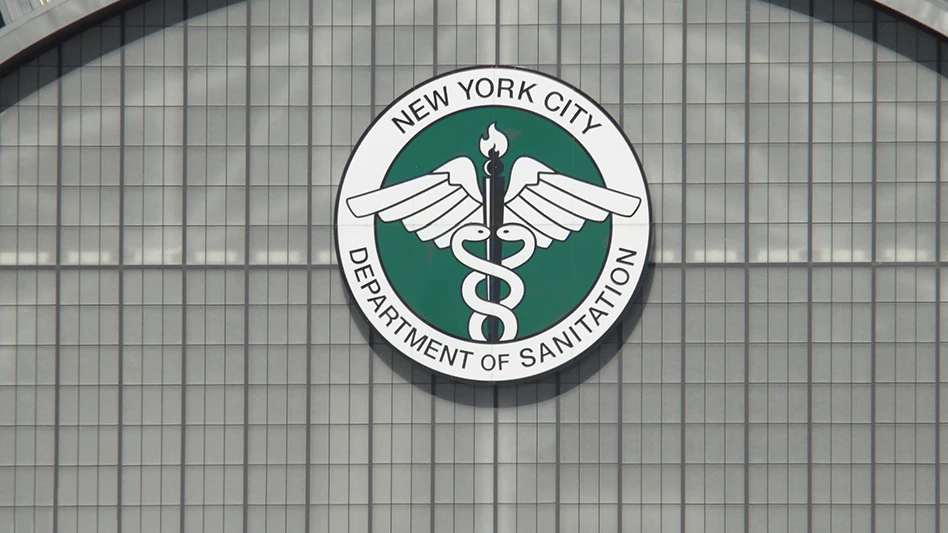
In January 2023, the city of San Diego began rolling out green organics collection bins to its residents, prioritizing climate equity in its distribution plan. Its related educational campaign also took digital equity into account, which meant sharing its message across various platforms, including billboards, ads on grocery store carts and social media.
The rollout was in response to California Senate Bill 1383.
The bill that started it all
In 2016, then-Gov. Edmund Brown Jr. signed S.B. 1383 into law, requiring the reduction of landfill disposal of organic waste and the associated methane emissions and air pollutants. Twenty percent of the state’s methane emissions result from organic waste in landfills. The law seeks to address this by requiring cities throughout the state to reduce and recycle organic waste, including food scraps, food-soiled paper from kitchens and food operations, garden and landscape material and wood.
The California Department of Resources, Recycling and Recovery (CalRecycle) worked from late 2016 to 2020 to develop the regulations that would achieve the goals of S.B. 1383. When the law went into effect Jan. 1, 2022, municipalities across the state were prompted to implement their own organics management and collection programs and required to conduct education and outreach on organics recycling.
Since the start of 2022, all the state’s communities have expanded programs to send still-fresh, unsold food from large food businesses to Californians in need. As of August, 77.8 percent of California communities have implemented residential organic waste collection, CalRecycle says, which equates to 480 out of 617 jurisdictions. The agency says 19 more jurisdictions plan to implement residential food waste collection in the second half of this year, while 126 jurisdictions have been granted more time to comply with S.B. 1383.
According to the city of San Diego’s website, implementation of S.B. 1383 required “extensive procedural changes and significant coordination,” including updating collection operations, amending agreements with nonexclusive franchise haulers and the city’s municipal code and providing ongoing outreach and education to residents and businesses.
Speaking during a WasteExpo session this past May titled Model Organics and Food Waste Collection Programs, Jennifer Ott and Maria Diego with San Diego’s Environmental Services Department (ESD) told attendees about the approach their department took in implementing S.B. 1838. Diego is a senior management analyst with San Diego’s ESD, while Ott is a supervising recycling specialist.
The container and program rollout

Services Department
With a population of about 1.4 million residents, San Diego is the eighth-largest city in the U.S. and the second-largest city in California, Diego said. The city’s ESD provides 285,000 residents with waste and recycling services, while private haulers serve other residents and commercial customers. Diego said each hauler must implement its own solid waste management program, including organics, adhering to state minimum requirements, monitoring compliance and conducting enforcement activities.
San Diego began delivering green bins to residents and collecting organic waste in January 2023. “We created policy decisions approved by the mayor to deliver the right size container to each household,” Diego said. However, households could exchange their bins for a different size or request additional green bins through the Get It Done app at https://sandiego.gov/get-it-done or by calling the ESD within 14 days of delivery at no charge if the bin was not used. Options include 35-, 65- and 95-gallon bins.
The city is required to use, sell or donate the compost and mulch produced through the program, Diego said. “Currently, our city of San Diego residents can self-load up to 2 cubic yards of free mulch, and there’s a fee if more is desired.”
The collected organics are transported to the city’s Miramar Greenery, which is at the entrance of Miramar Landfill. Diego said Miramar Greenery can accept 600 tons of organic material daily, and the city’s trucks are expected to deliver 400 tons per day. Food normally comprises 25 percent of incoming loads, and greenery accounts for 75 percent.
As of early May, the city had collected 117,000 tons of organics, a figure Diego said was expected to grow to 150,000 tons by the end of the 2024 fiscal year, which ran from July 2023 through June 2024.
Diego said ESD took an equitable rollout approach for its organics recycling program, prioritizing areas with low climate equity index scores. She explained that the climate equity index score was developed by the city of San Diego in 2019 and revised in 2021. It considers environmental factors such as flood risk, fire risk, tree coverage and solid waste sites and facilities; mobility factors such as traffic density, commute burden and street conditions; health factors such as asthma rates and cancer fatalities; housing cost burden and overcrowding; and socioeconomic factors such as median income and unemployment.
ESD sited staging locations for its organic containers in different parts of the city using city-owned facilities. Diego said this approach “allowed for quick and efficient exchanges and deliveries that paralleled with our daily operations.”
The containers included “easy to consume and focused messaging,” she said, adding that “issues were immediately addressed because resources remained in those areas until distribution was complete.”
It took eight months for ESD to deliver 210,336 containers, Diego said, averaging 2,500 to 3,000 containers per week.
The city used grants and debt funds to pay for the containers, which totaled $14 million. Assembly and distribution of the containers cost San Diego an additional $1.8 million to $2 million.
“We swapped out 9,800 containers for a different size because of customer requests, and all these customers’ swap-outs were done on the weekends,” she said.
By the end of 2023, San Diego collected 88,000 tons of organic material from residents and created 198 new routes, Diego said. “And this included 30 new routes a day at about 1,500 homes per route.”
In addition to the containers, to implement its organics collection program, the city acquired 43 new packer trucks at an estimated cost of $22 million and hired 40 new drivers using recruitment, sign-on, routine and referral bonuses in addition to competitive salaries.
Education and outreach

Services Department
"As you can see, this was a huge effort,” Ott said of the logistics involved in the program rollout. “And this huge effort also required a lot of education and outreach,” which her section at ESD was tasked with.
With the help of a consultant and the use of community-based social marketing, Ott said the city determined the barriers to and motivators for residents using their green bins.
“A lot of our customers had manual yard waste collection, but no one was doing food yet, and much of the city didn’t have any yard waste collection at all,” she said. “So, our goals were to build awareness and prompt behavior change, of course, including messaging about introducing people to the green bin, letting them know what goes in there and telling them why this is important.”
In its education campaign, the ESD was mindful of digital inequities and ensured that its messaging was widely available through other means as well to reach as many people as possible.
Of the people who do not speak English in San Diego, Spanish, Tagalog and Vietnamese are the most popular languages, she said, so it was important to provide outreach in those languages.
“We had over 90 million impressions in those eight months,” Ott said. “We did a lot of paid advertising, things like billboards [and] transit center advertising. We had ads on grocery store carts.” The city also used social media and in-app ads. “As we all know, the more people see your message, the more they internalize it. So, we try to get people in a lot of different ways.”
That includes putting signs in English and Spanish on its collection trucks, which regularly travel through the city’s streets.
“We also did some fun things,” Ott said, which included participating in the St. Patrick’s Day and Pride Day parades. “There’s nothing like a recycling truck and a parade. People love it.”
The consultant ESD worked with also developed seven videos. “We had English and Spanish PSAs, some 30 seconds and some 15 seconds, and then a couple of longer ads and a completely new web page,” she said.
About a month before the carts were to be delivered, Ott said, ESD sent a letter to each resident in the neighborhood regarding the program, which was followed by a four-page instruction guide in the four languages two weeks later. “Then, when we delivered the bin, we delivered kitchen pails. … In that bin, we left an informational flyer showing people how to use the kitchen bin, how to keep it clean, what to put in it and instructions on how to change the size out of their bin if they wanted to.”
She noted that ESD came up with a list of about 80 terms to be used consistently across all translations of the educational materials, such as using “food scraps” instead of “food waste.”
Additionally, two education specialists were on each of the four to eight crews the city had in the field while the containers were being delivered, Ott said.
In surveys conducted after the rollout, Ott said 88 percent of respondents indicated they were satisfied with the collection service at their home, while 73 percent had a positive impression of organics recycling and 77 percent of city service customers remembered receiving information about the program.
Ott mentioned that the organics rollout did require ESD to pivot at times from what was planned. “Don’t be afraid to pivot and change things if needed,” she said.
She also stressed the need for communication with residents and meeting people where they are. “A lot of us outreach folks, … we live waste reduction every day. We think, ‘Well, why wouldn’t you recycle your food waste?’ That’s not where other people are coming from.
“We had to be OK with telling people, ‘Just start with your yard waste and then add your fruit and vegetable scraps, and then, when you’re more comfortable, add the grains,” she continued. “When you’re really ready, add your meat and dairy. Take it slow, at your own pace.’”
According to the numbers that Diego and Ott provided, it appears to be a message that has resonated with San Diego residents.

Explore the September 2024 Issue
Check out more from this issue and find your next story to read.
Latest from Waste Today
- Waga Energy partners on RNG project at France landfill
- Hawaiian county selects landfill site
- CAA submits final draft program plan in Oregon
- Washington city adds organics collection to waste service
- Aspen Waste Systems expands into Denver-metro market
- NYSAR3 seeks respondents to commercial recycling survey
- Aemitis AD system goes online
- Liebherr breaks ground on logistics center





